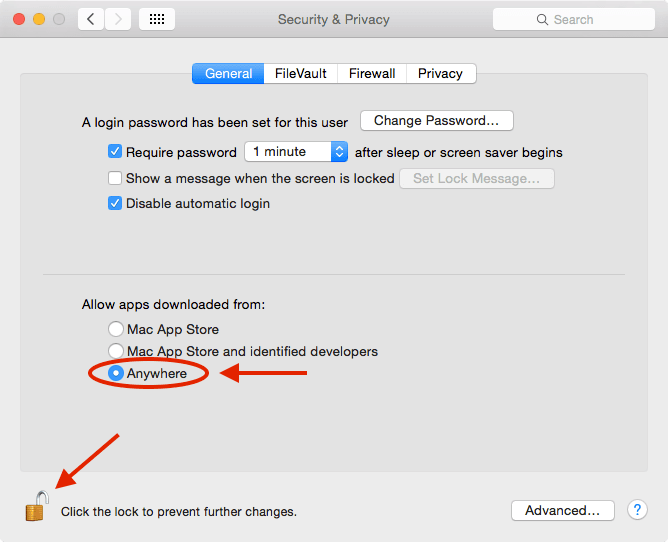The terminal emulator (Terminal.m) in Serial Tools is an Objective-C extension of NSTextView class. It can be used as sample code for any Cocoa application that needs to communicate with a Mac OS X serial port through a text. Serial Tools for OS X, includes a Terminal Emulator, a Protocol Analyzer, and a serial port monitor to watch for connections and removals of serial ports. Serial Tools is completely free, and available from the Mac App Store.
Step-by-Step
To find the process that is listening to a port on Mac OS X, we’ll use the lsof command to find the process ID (PID), and the ps command to show the name.
Find the Process ID (PID)
There are two different ways we can use to find the process that is listening to a port on Mac OS X.
Find the Process ID (PID) Using lsof
Using the lsof command we can find the process ID (PID) for a specific port that is in a LISTEN state. In a terminal type the following and replace the “<port-number>” with our port number.
This generates output that looks like this:
In the output above the PID (process ID) is the second value, in this example output the process ID (PID) is “63851”. This command will also print out the port number, which is 9999 in the above output example.
Find the Process ID (PID) Using netstat
Using the nestat command we can find the process ID (PID) for a specific port. In a terminal type the following and replace the “<port-number>” with our port number.
This generates output that looks like this:
In the output above the PID (process ID) is the ninth value (the fourth value from the end), in this example output the process ID (PID) is “63851”. This command will also print out the port number, which is 9999 in the above output example.
Find the Process Name
We can now use the process status command ps to display the process name for the process ID (PID).
This generates output that looks like this:
In the output above the process name is the last value “the-process.” Now we know the name of the process that is listening to the port. The reason as to why the grep command is listed twice is to avoid displaying the process ID (PID) for the grep command itself.
Other Useful Commands
How to Kill or Stop the Process by PID
You can kill the process by process ID (PID) using the kill command. Replace “<PID>” with the process ID from lsof or netstat.
Osx Serial Port Terminal
The lsof Command
The lsof command lists open files. Network sockets count as files, so each open network socket, either listening or actively in use is listed by lsof. In addtion you can run the man lsof command to display all the different options for lsof.
lsof can take a very long time to execute, so I suggest that you use -n (inhibits the conversion of network numbers to host names for network files) and -P (inhibits the conversion of port numbers to port names for network files) to speed it up.
Powerful terminal emulator for macOS that offers you the possibility to connect to other systems by using Xterm, VT102, and ANSI controls
What's new in Serial 2.0.7:
- Bug fixes and improvements
Serial is a basic terminal emulator that can help you connect and control serial devices, such as servers, network equipment like routers or modems, PBX systems, and so on.
The good news is that Serial comes with built-in support for most serial devices, so you do not have to manually install any driver.
Unsophisticated terminal emulator that can automatically detect available serial devices
Once you launch the Serial application, the utility scans for accessible serial devices and automatically lists them in the Open Port or in the Open Bluetooth window. For your convenience, the app gives you the option to add user-friendly names to each entry.
For each connection, Serial opens a separate terminal window where you can easily interact with the device’s controls. If you are working with Cisco equipment, the “Break” function allows you to put things on hold while uploading configuration files and so on.
Terminal Emulator Osx Serial Port

Provides support for standard terminal controls and protocols
Serial is able to emulate Linux, Xterm, VT102, and ANSI terminal controls, but also provides support for the XMODEM and YMODEM protocols for transferring files. Moreover, it can connect to USB or Bluetooth devices or adapters, and offers support for international character encodings.
Even though you can connect to these serial ports using the built-in OS X Terminal application, Serial provides a more streamlined solution for system administrators that need to maintain various types of network equipment on a daily basis.
Terminal emulation solution for serial devices that just works
Serial proposes a user-friendly graphical user interface and helps you control and manage different serial devices connected to your network with minimal effort.
The utility integrates interface customization options if you want to personalize its look, but also packs useful features for handling Cisco devices, for finding specific keywords, and so on.
Filed under
Serial was reviewed by Iulia Ivan- 7-day trial
Serial 2.0.7
 add to watchlist
add to watchlistSerial Port Terminal Os X
send us an update- runs on:
- OS X 10.11 or later (Universal Binary)
- file size:
- 18.3 MB
- filename:
- Serial_2.0.7.zip
- main category:
- Utilities
- developer:
- visit homepage
top alternatives FREE
top alternatives PAID